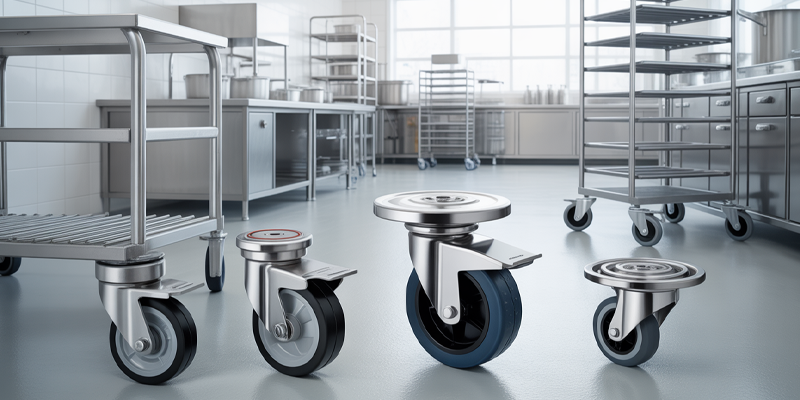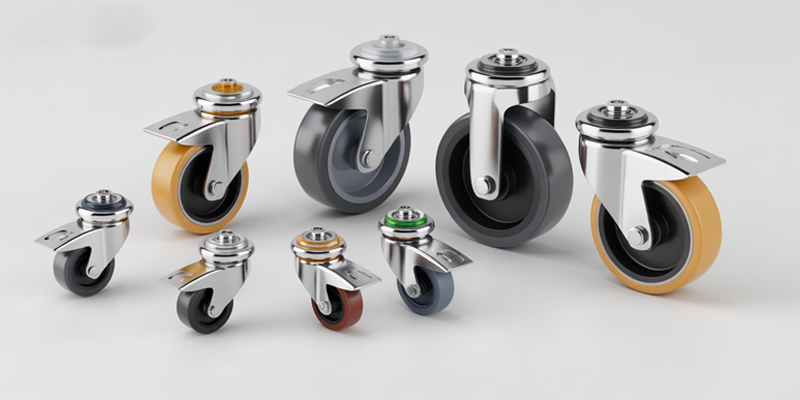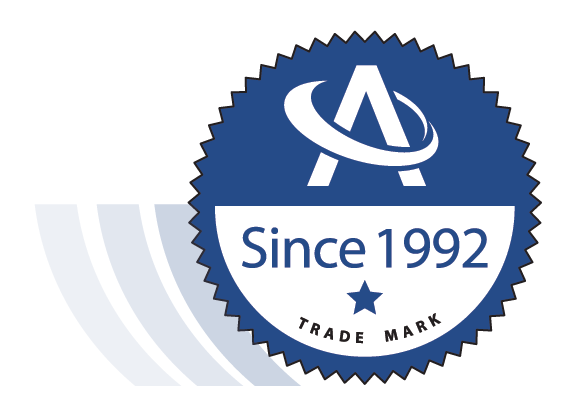Choosing Food Grade Casters What You Need to Know
Nov 12th 2025
Food Grade Casters: What to Know
In the food processing and handling industry, selecting the right equipment is essential to ensuring efficiency, safety, and hygiene. One often overlooked yet crucial component in these environments is the caster small wheels that allow equipment and machinery to move easily. Food grade casters are specifically designed for the food industry, where cleanliness, safety, and durability are of paramount importance. Whether used in carts, racks, or large food processing machines, the right casters can significantly enhance operational efficiency and compliance with health regulations.
In food processing settings, casters must meet stringent hygiene standards, resist corrosion, and be durable enough to withstand heavy duty use. Selecting the most suitable casters for these applications can enhance workflow, minimize downtime, and prevent contamination. In this article, we will explore the various types of casters, with a focus on those specifically designed for food processing environments, such as sanitary casters and food processing casters.
What Are Casters?
Casters are small wheels mounted on a swivel or fixed plate, used to facilitate the movement of heavy or bulky objects in a wide range of industries. These wheels enable equipment, such as carts, machines, and racks, to be easily rolled across floors for moving goods or machinery.
Casters come in various types and sizes, depending on the specific requirements of the equipment and environment in which they are used. For instance, commercial casters are often used in retail and restaurant environments to facilitate the movement of shelves, carts, and food preparation tables. In contrast, food grade casters are designed to meet stricter regulations, ensuring hygiene, resistance to corrosion, and durability.
In food related environments, casters are especially important because they support not only the movement of heavy kitchen equipment but also ensure that the equipment is easy to clean and maintain. Food grade casters must be able to handle wet conditions, chemicals, and high temperatures, making them a vital part of the food processing industry.

Types of Casters and Their Applications
Casters come in a variety of types and materials, each tailored to meet the unique needs of different environments and industries. Understanding the various kinds of casters and their applications is crucial, particularly in food processing, where hygiene, durability, and performance are of utmost importance.
General Types of Casters
Casters can be broadly categorized based on their design and functionality. The main types include
- Swivel Casters These casters feature a rotating mount that allows them to turn in any direction, making them highly maneuverable. Swivel casters are ideal for situations where equipment needs to be moved around tight corners or in different directions.
- Fixed Casters Unlike swivel casters, fixed casters only move in a straight line. They provide stability and are often used in combination with swivel casters to balance maneuverability and straight line movement.
- Kingpinless Casters These casters are designed without a kingpin (the central pin that connects the wheel to the swivel mechanism), making them more durable and resistant to wear. Kingpinless casters are particularly beneficial in heavy duty applications, where the added durability can help reduce maintenance and extend the caster's lifespan.
These general caster types are suited for different operational needs, offering a balance between maneuverability, stability, and longevity.
Food Grade Caster Types
In the food processing industry, selecting the right caster is crucial for maintaining high hygiene standards and ensuring long lasting durability. Several materials are preferred for food grade casters, each offering specific benefits for food related applications.
- Stainless Steel Casters Stainless steel is a top choice for food processing environments due to its resistance to corrosion, rust, and staining. The non porous surface of stainless steel makes it easy to clean and sanitize, preventing food particles and bacteria from adhering to the caster surface. These casters are ideal for use in wet environments, such as kitchens, storage areas, and food production lines.
- Iron Casters Iron casters, often coated for corrosion resistance, are ideal for heavy duty applications, including large food processing equipment and carts. While not as resistant to rust as stainless steel, iron casters can still perform well in dry or semi dry food processing environments. They offer durability and a high weight capacity, making them a good fit for stationary equipment or equipment with heavy loads.
- Polyurethane Casters These casters are a popular choice in food grade applications because they offer a smooth ride and are resistant to abrasion and impact. Polyurethane casters also provide superior traction and are non marring, making them ideal for use in environments where floor protection is necessary. They also resist many chemicals and oils, which is an advantage in food processing environments where spills are common.
Another important consideration for food processing applications is temperature. In areas where high heat is present, such as cooking stations or ovens, high temperature casters are essential.

Material Selection for Food Grade Casters
When selecting casters for food grade environments, the material is a critical factor in ensuring durability, hygiene, and overall performance. Different materials offer unique benefits for the food processing environment, including resistance to exposure to moisture, chemicals, temperature fluctuations, and weight bearing requirements. Let's find out the most common materials used in food grade casters.
Stainless Steel Casters
Stainless steel casters are preferred in the food processing industry due to their exceptional resistance to corrosion, rust, and staining. It is suitable in environments that frequently come into contact with water, cleaning chemicals, and potentially contaminated food products. The stainless steel surface is non porous, preventing bacteria and food particles from adhering to it.
This makes the steel casters incredibly durable and suitable for harsh conditions often found in food processing settings. They are also easy to clean and sanitize, which is crucial for meeting food safety regulations. For heavy duty applications, stainless steel casters offer added support and durability, making them suitable for large food processing equipment and machinery that require frequent movement.
Polyurethane Casters
Polyurethane casters are a versatile choice for food grade applications, especially when smooth, quiet movement and floor protection are essential. These casters offer excellent non marring properties, meaning they won't leave marks or scratches on floors, which is vital for maintaining the appearance of commercial or industrial flooring. Additionally, polyurethane provides a smooth ride, making it easier to move equipment like carts, racks, and smaller food processing tools over various surfaces.
These casters are also highly resistant to a range of chemicals, oils, and cleaning agents commonly used in food processing facilities. Their abrasion resistance ensures longevity, even under continuous use. Polyurethane casters are an excellent option for environments where chemical exposure or frequent cleaning is necessary, as they can maintain their performance without degrading.
Iron Casters
Iron casters, although not as corrosion resistant as stainless steel, are still a strong contender for specific food processing applications. Iron is ideal for heavy duty operations that require a high weight capacity. These casters are often used in environments that require supporting large machinery or equipment, such as industrial mixers or heavy duty refrigeration units.
Iron casters are typically coated to provide some level of corrosion resistance, but they are best suited for dry or semi dry conditions. In environments where moisture exposure is limited, iron casters can provide the necessary durability and strength to handle demanding tasks without compromising their integrity. However, they are not recommended for areas where constant exposure to water or humidity is a concern.
Kingpinless Casters
In food processing facilities, where equipment is often heavy and subject to constant movement, kingpinless casters provide an excellent solution. These casters are designed without the traditional central pin that connects the wheel to the swivel mechanism, making them more durable and resistant to wear and tear. This design is particularly advantageous in high demand environments where casters are subjected to frequent use and heavy loads.
The kingpinless swivel caster design also ensures smoother movement and better tracking, reducing the potential for damage over time. Because they lack a kingpin, these casters are less likely to fail under heavy use, making them a popular choice in food processing settings that require both longevity and performance. Their durability also reduces the need for frequent maintenance, ensuring that operations run smoothly without unnecessary interruptions.
Heavy Duty Casters for Food Grade Applications
In food processing, heavy duty casters are indispensable for equipment that needs to carry substantial weight while remaining highly mobile. Choosing the right heavy duty caster is crucial for ensuring operational efficiency, minimizing downtime, and maintaining safety standards.
Steel Casters Heavy Duty
Heavy duty steel casters are often the best option for food processing facilities that require supporting large, heavy equipment. These casters provide excellent load bearing capabilities and are particularly suitable for applications that involve the frequent movement of large machines or storage units.
The strength of steel casters also makes them ideal for the food processing industry, where heavy loads and continuous movement are standard. They are capable of withstanding the harsh conditions that food processing environments often present, including exposure to moisture, chemicals, and high temperatures. Steel casters are a reliable and robust solution for maintaining mobility and efficiency in environments that require the frequent movement of heavy equipment.
Factors to Consider When Choosing Heavy Duty Casters
When selecting heavy duty casters, it's essential to consider various factors to find a suitable fit for your specific needs. Load capacity is the first and most crucial factor, ensuring that the casters can support the weight of the equipment they will carry, is essential for both safety and performance.
The environment in which the casters will be used is also a key consideration. For example, environments with high humidity, exposure to chemicals, or extreme temperatures may require casters made from corrosion resistant materials, such as stainless steel. Similarly, the type of floor surface the casters will be rolling on (e.g., smooth, rough, or uneven) can impact caster performance and durability.
By taking these factors into account, you can ensure that your heavy duty casters will meet the demands of your food processing operation and provide long term, reliable service.
Casters for Specific Food Industry Needs
Food processing environments require casters that not only support the movement of heavy equipment but also meet stringent standards of hygiene, durability, and resistance to challenging conditions, including moisture, temperature extremes, and chemicals. Below, we will explore some specialized casters designed to address the critical needs of the food industry.
Sanitary Casters
Sanitary casters are constructed with sealed bearings, smooth finishes, and specialized materials that resist bacterial growth, making them easily wiped down or disinfected. Their design is intended to minimize the risk of contamination, making them ideal for environments such as kitchens, food packaging facilities, and other food processing areas where hygiene is crucial. Choosing the right sanitary caster ensures that food equipment remains compliant with stringent hygiene requirements and is easier to maintain in the long run.
Corrosion Resistance in Food Processing
Corrosion resistant casters not only extend the lifespan of the equipment but also help maintain the cleanliness and safety of the food production area. In environments where hygiene is crucial and exposure to corrosive substances is unavoidable, selecting casters with enhanced corrosion resistance ensures that equipment operates smoothly without frequent breakdowns.
Temperature and Chemical Resistance
High temperature casters are specifically designed to withstand the heat generated by ovens, cooking equipment, and hot food containers. These casters maintain their structural integrity and performance even when exposed to temperatures that would typically degrade the performance of standard caster materials.
Similarly, chemically resistant casters are essential in food production areas where exposure to harsh cleaning agents, oils, or other chemicals is frequent. These casters are designed to maintain smooth operation and resist damage from chemical exposure.
V Groove Casters A Special Consideration for Food Processing
V groove casters are designed with a specialized wheel profile that fits into a corresponding track or groove on the surface they move along. The V shaped groove allows the caster to be guided by the track, ensuring that the movement of equipment is more controlled and consistent.
In food processing and production environments, where equipment is frequently moved along specific paths or in areas with narrow spaces, V groove casters can improve workflow efficiency by offering better control over the movement of carts, racks, or larger machinery.
Advantages of V Groove Casters in Food Applications
One of the key benefits of V groove casters is their superior tracking ability. Because the wheel fits into a track, it reduces the chances of equipment veering off course, making it ideal for automated systems or environments where equipment must follow a fixed path, such as conveyor systems in food processing lines.
Another advantage is the smoother movement they provide. V groove casters ensure that equipment moves more evenly and with less vibration, improving overall operational efficiency. This precision is crucial in food manufacturing settings, where consistent and reliable movement is essential to maintain production speeds and quality standards.
Additionally, the ability to move equipment with greater accuracy enables more efficient use of space and helps prevent potential collisions or accidents that could lead to production delays. These benefits make V groove casters an excellent choice for many food processing applications, particularly in areas where precision and smooth operation are crucial.
V groove casters offer a specialized solution for food production environments, combining better tracking, smoother movement, and improved stability. Their design enables more precise control of equipment, making them an excellent choice for various food related applications.
Choosing the Right Caster
Selecting the right caster for food grade applications involves considering several important factors to ensure optimal performance, safety, and efficiency.
Caster size and load capacity are crucial for safe operation. Ensure that the casters can support the weight of the equipment or machinery being moved, as exceeding the load capacity can lead to damage or malfunction.
The material of the caster must be chosen based on the operating environment. For instance, casters made from corrosion resistant materials are essential for use in wet or acidic food processing environments. Similarly, consider that floor type casters must be compatible with different floor surfaces, such as concrete, tile, or even uneven flooring, to avoid wear or reduced performance.
Finally, maintenance needs and safety features, such as locking mechanisms, should be prioritized to ensure the longevity of the casters and prevent accidents.

Maintenance and Care for Food Grade Casters
To keep food grade casters in optimal working condition, regular maintenance is essential. Regular cleaning and inspection should be part of your routine. For example, stainless steel casters should be cleaned with non abrasive solutions to prevent damage to the surface while also avoiding the buildup of food particles or bacteria.
Additionally, lubrication is necessary to reduce friction and prevent wear on the caster's moving parts. Applying the proper lubricant ensures smooth movement and extends the lifespan of the casters.
If casters begin to show signs of wear, such as wobbling or difficulty turning, it may be time to replace worn out casters. Continuing to use damaged casters can compromise safety and functionality. Paying attention to damage and performing regular inspections ensures that safety casters remain effective and safe to use in food processing operations.
Wrapping up
Selecting the right casters for food grade applications is crucial for ensuring safety, efficiency, and hygiene in food processing environments. The right casters can enhance equipment movement, reduce downtime, and help ensure compliance with health and safety standards. It's essential to consider factors like material, load capacity, and maintenance needs to ensure long lasting performance. By selecting the best casters for your specific needs and maintaining them properly, you can ensure that your operations run smoothly and safely. Always prioritize food processing casters and sanitary casters to protect both your equipment and the integrity of your food products.




 Email US
Email US
 Hours
Hours
 Visit Our Showroom
Visit Our Showroom




